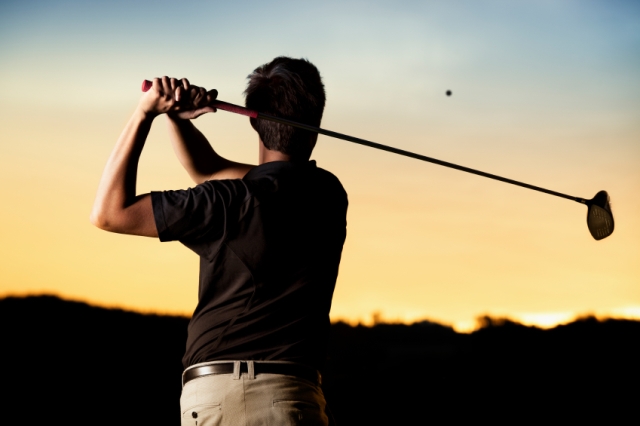Lower back pain is the most common golf-related symptom. It affects one out of three adult amateur golfers. In fact, amateurs are more likely to develop low back pain than professional golfers who hit hundreds of shots daily.
Even though professionals hit the ball more often and further than the rest of us, amateur players have more muscle activity, lateral bending and twisting during the golf swing. Why? Amateur players’ swing patterns are inconsistent, and they try to hit farther by swinging harder.
Here are three tips to help golfers play with less low back pain. They may even improve scores:
- Warm-up. Athletes perform better and get hurt less if they warm up their muscles before activity. In general, amateur golfers should spend 10-15 minutes exercising their muscles (calisthenics, jogging in place, stretches) followed by a series of golf swings with progressive increases in the range of movement and vigor.
- Swing technique. There are two options: The “modern” swing is recommended for maximum power and distance. This is generally what is taught and seen on television: large shoulder turn, minimal pelvic rotation, finishing in a reverse “C” position. This creates significant torque, lateral compression and hyperextension forces on the lower spine. The “classic” swing is characterized by large upper body rotation, large pelvic rotation and left heel lift, finishing with a straight spine or “walk-through” position. While this swing is older in style, the forces on the lower back are less, and it may be a referred swing to decrease lower back symptoms. Whichever method you use, focus on athletic posture, smooth rhythm and not over-swinging.
- Conditioning. Strong muscles are less prone to injury. In addition, strong muscles will support the deep spinal structures including joints, ligaments and intervertebral discs. Not only will increasing strength likely decrease low back injury, it also will improve club head speed and distance. Strengthening of the “core” muscles including transversus abdominis and multifidi muscles can be done by following an exercise program to condition this area.
Matthew DesJardins, M.D., is an expert in spine-related disorders and practices at OrthoCincy.

